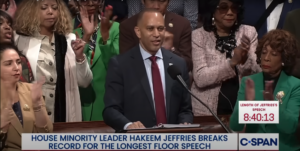Dobbs v. Jackson Women’s Health Organization Explained
The United States Supreme Court has agreed to hear a pro-life case out of Mississippi challenging a state law that places strict limits on abortions after 15-weeks. As with every single pro-life case that comes to the Supreme Court, you are about to hear news from the usual suspects in the liberal media that the world is about to end — again! Pay no attention to their hysterics. Here is what you need to know.
As the Supreme Court has said numerous times, states have a legitimate interest in limiting abortion and protecting innocent life. Relying on that premise, Mississippi’s “Gestational Age Act,” enacted in 2018, limits abortions after 15 weeks to the cases of medical emergencies and several fetal abnormalities.
The law was immediately challenged as unconstitutional by abortionists at the Jackson Women’s Health Organization. A federal district court agreed with the abortion clinic, declaring that Supreme Court precedent does not allow states to restrict abortions in this way until a fetus becomes “viable.” The U.S. Court of Appeals for the Fifth Circuit upheld the district court’s decision.
Mississippi is now appealing to the U.S. Supreme Court, and the Court has fortunately granted the review. Although you will hear the constant drumming of protecting Roe, the limited question before the Court is whether all pre-viability prohibitions on elective abortions are unconstitutional.
The case will be heard in the fall when the justices return from the summer recess. It joins Cameron v. EMW Women’s Surgical Center, another pro-life case that will deal with a more procedural question about the State’s authority to ensure that laws are fully defended in the courts. Dobbs, therefore, becomes the most crucial pro-life case the Court will hear, given that it will deal with the merits of the law, testing the limits of the Court’s dubious abortion jurisprudence.
The scientific advances made since the lies upon which Roe and Casey were built have exposed the lie of abortion. As women peer into the womb, the fact that we are not dealing with a blob of tissue has become apparent. And given that undeniable fact, pro-abortion proponents and sympathetic judges have struggled to come up with a clearly arbitrary, yet credible, artificial line at which to allow abortions.
Most Americans (up to 74%) want to ban second and third-trimester abortions.
Now you may be thinking, “What difference does that make? This is a legal case, and polls shouldn’t matter to the Court,” and you would be right. Traditionally, the Court would look at the law and the facts of the case and render a decision on the law, giving the legislature ample room to operate and make policy determinations within constitutional limits.
Nevertheless, in the case of Roe—in the abortion context—the Court has so overstepped its role that all it has and will ever have (until it corrects itself) are questions of policy. Now they are legislating about viability and weighing and reweighing the state’s interests in protecting life and protecting women and children. It is embarrassing. Can there be any more compelling interest than these?
But when it comes to abortion, the Supreme Court has had to employ all kinds of gimmicks and smokescreens in order to ignore its traditional role and interpretative procedures to preserve the abortion fiction. Justice Anthony Kennedy admitted as much in the Carhart decision writing:
“It is true this longstanding maxim of statutory interpretation has, in the past, fallen by the wayside when the Court confronted a statute regulating abortion. The Court at times employed an antagonistic ‘canon of construction under which in cases involving abortion, a permissible reading of a statute [was] to be avoided at all costs.’”
What has the other side so bent out of shape this time around is that they are not sure they have enough liberal legal wizards to perform their abortion alchemy to save their all-encompassing pro-abortion standard, where even the most reasonable restrictions on abortion are unconstitutional.
There is indeed much hope for most Americans who support such restrictions, given the gains we have made at the U.S. Supreme Court. But far from a turn to the extreme right as you are sure to read about in the papers, all we will hopefully witness (God willing) is a return to the basic tenant of truth in law. A return to scientific reasonableness. A return to biological reality.
And that will be a monumental step indeed.





